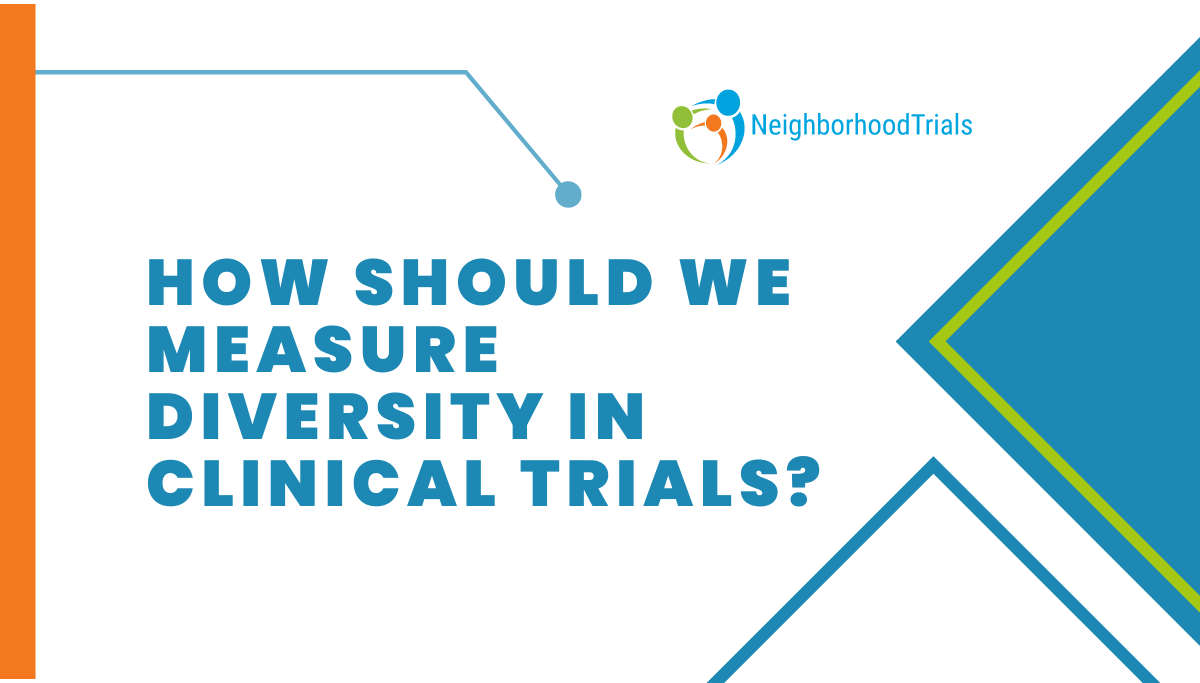How Should We Measure Diversity in Clinical Trials?
Reimagining Clinical Trial Diversity Metrics
If we want to achieve more diversity in clinical trials to meet FDA requirements and validate new treatments are safe and effective for everyone, we need to start by measuring the right factors.
At the recent Consortium of Multiple Sclerosis Centers (CMSC) Annual Meeting, I spoke about why current methods for collecting clinical trial diversity data may not be the most accurate measures of true diversity. I also shared some specific ways pharmaceutical companies can capture data that is more accurate and inclusive of underrepresented groups.
Where do current measures of diversity in clinical trials fall short?
Current metrics capture limited data that may not be effective in predicting patient behavior and impact. This isn’t only true for clinical trials.
Consider the U.S. Office of Management and Budget’s 1997 Standards for Maintaining, Collecting, and Presenting Federal Data on Race and Ethnicity. The questions are often limited to whether someone considers themselves Hispanic/Latino or not Hispanic/Latino, followed by which of five broad racial designations best describes them.
There are a few challenges with relying on racial categories to measure diversity. First, these categories weren’t initially developed to capture diversity, but to determine who is White.
They were used to determine privilege, which led to biased answers.
The categories have also changed over time and no longer capture a realistic picture of people during a time of cross-cultural marriages. Many people don’t identify with a single cultural, heritage, or ethnic identity, but with several.
Additionally, these questions don’t offer enough insight into factors that may have more relevant insight into the health of clinical trial patients and how they may respond to treatments. Whether someone is White or Black does not give us enough information about their skin tone to know whether they may respond differently to a topical medication or enough about their cultural heritage to indicate whether they may be at an increased risk for certain diseases. It doesn’t indicate whether they can afford treatments for health conditions or have the means to attend follow-up appointments. When sponsors have more detailed information about a patient, they can make more accurate conclusions about their response to treatments. They can also recommend ways to minimize disparities that contribute to a lack of participation in clinical trials, such as providing transportation to patients who need it.
What are better ways sponsors can measure diversity in clinical trials?
M&B Sciences conducted ]a focus groups for Alexion, the rare disease division of Astra Zeneca, that included individuals from seven major cities and rural areas throughout the United States asking how they see themselves, how others would describe them, their experiences with healthcare, and what constraints may prevent them from participating in clinical research.
We asked about other factors beyond age, sex, geographic region, weight, race and ethnicity to gather more comprehensive diversity data, including:
- ZIP code
- Whether they have mobility issues
- How far they traveled to their healthcare provider
- Whether they have transportation difficulties
- Whether they were insured and what type of insurance they had
- Employment status
- Household earnings
- Household size
- Cultural identity
Focus group data also showed additional data like household earnings, transportation, and distance from a healthcare provider were more relevant in determining their level of access to healthcare and whether they could participate in clinical trials.
What else can sponsors do to improve diversity in clinical trials?
As sponsors prepare to implement the FDA’s new requirements for race and ethnicity diversity plans, they should start by analyzing the prevalence of the disease or condition they are studying to determine realistic patient enrollment goals. This information may come from multiple data sources, including previous clinical trials and public health data. Spatial epidemiology data, or data on the prevalence of diseases within specific demographics and geographic areas, can be especially helpful.
In designing clinical trials, sponsors should ask additional questions that are more inclusive and more likely to impact health outcomes during the patient recruitment process.
They should consider potential barriers to reaching underrepresented participants, including language barriers, lack of healthcare access, and transportation or travel constraints.
Identifying these barriers may not be enough to overcome them. This is where a patient recruitment firm with expertise in reaching diverse populations can help.
M&B Sciences combines deep expertise in clinical trials, spatial epidemiology, and technology with authentic community partnerships. We use hyperlocal health and demographic data to identify patient populations with a focus on diversity. Our Neighborhood Trials app makes it easy for patients to find trials close and easy for them to enroll, while our platform makes it easy for sponsors to screen them. If you’re ready to learn more about what we can offer, contact us for a consultation.
